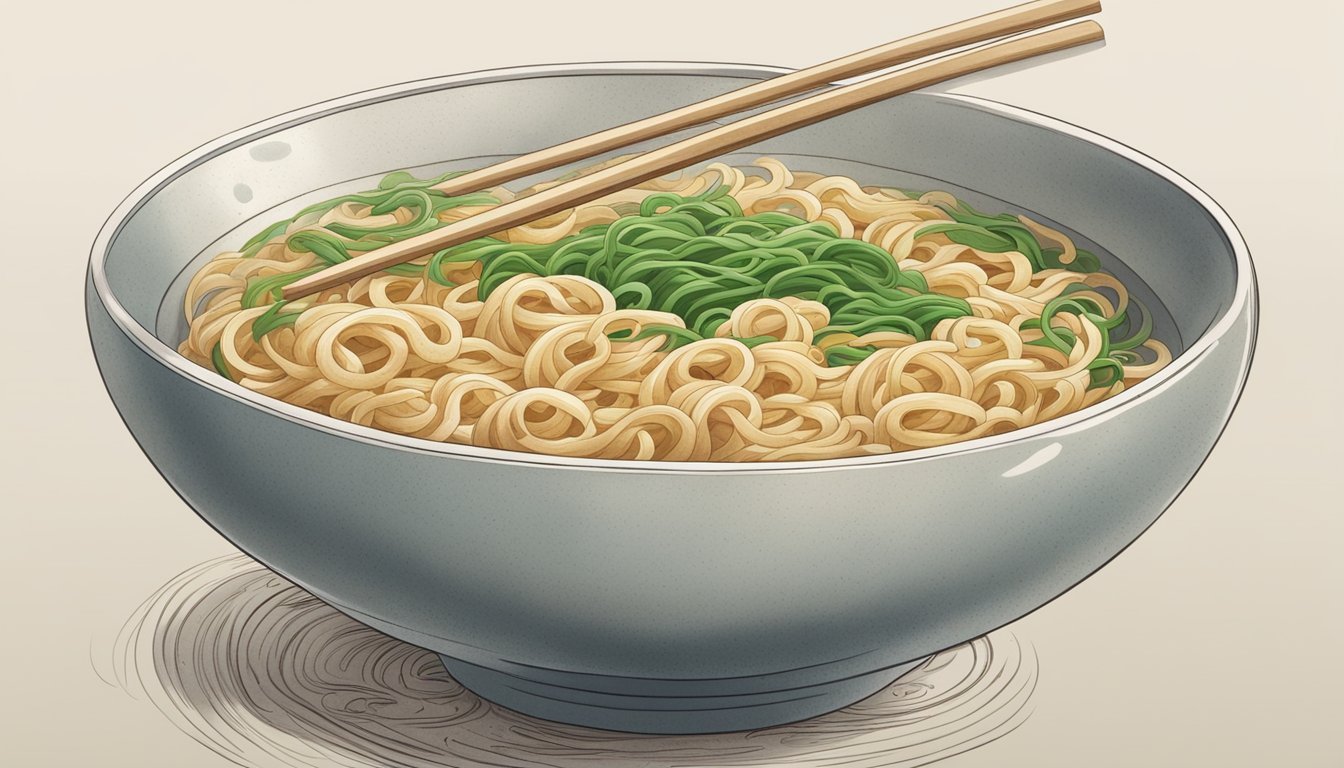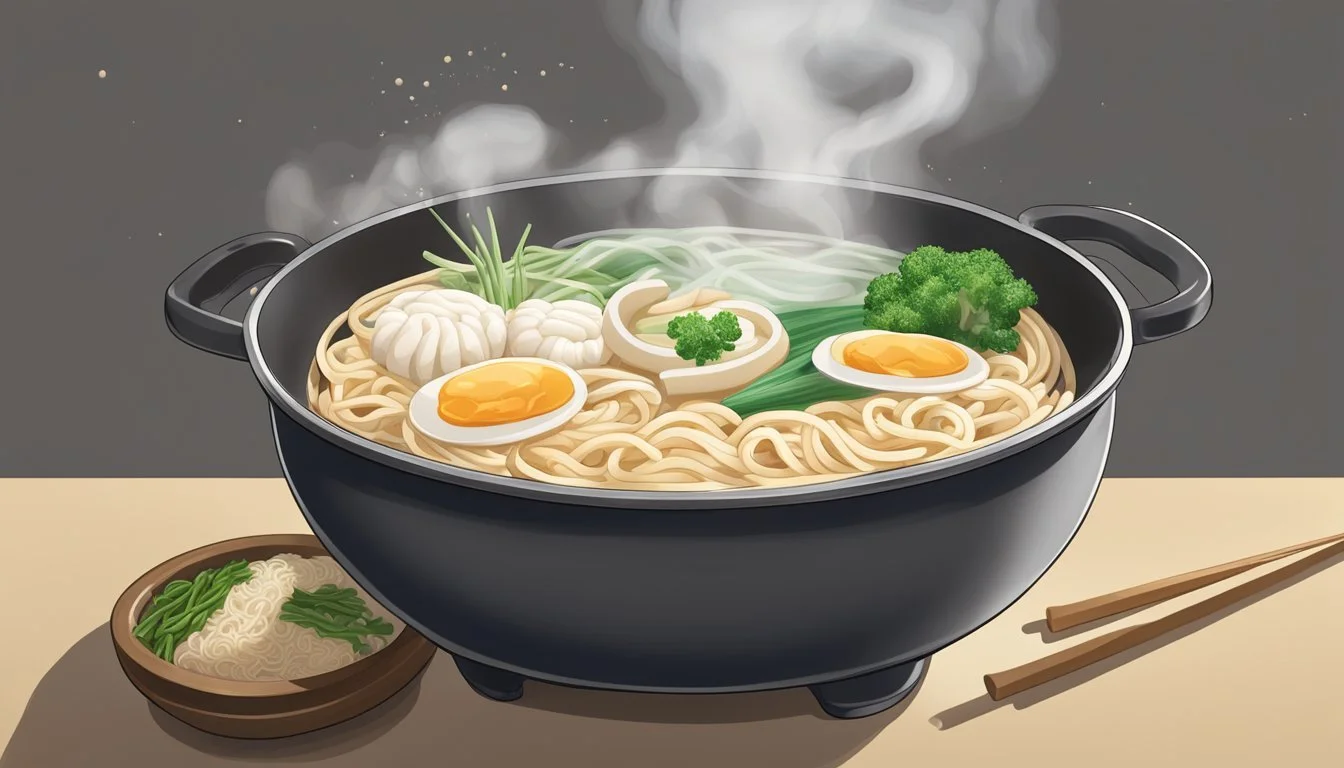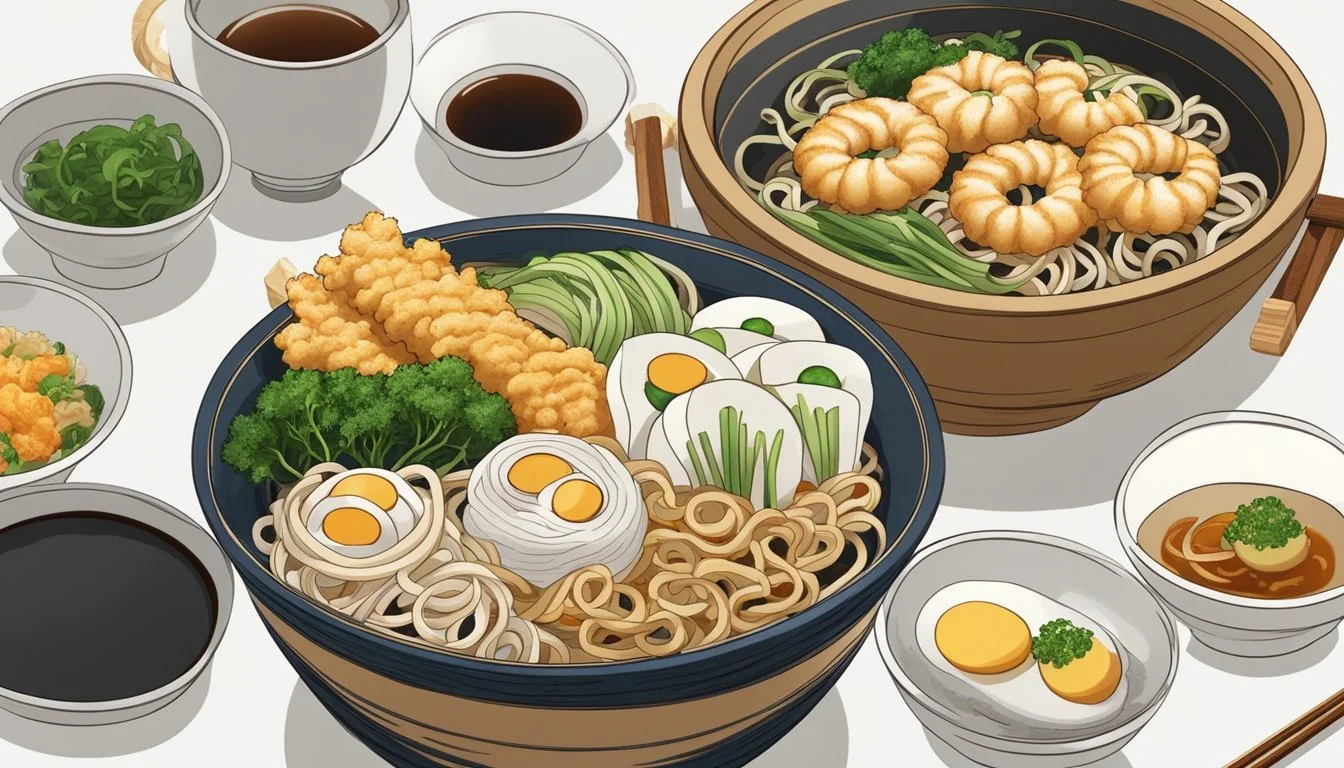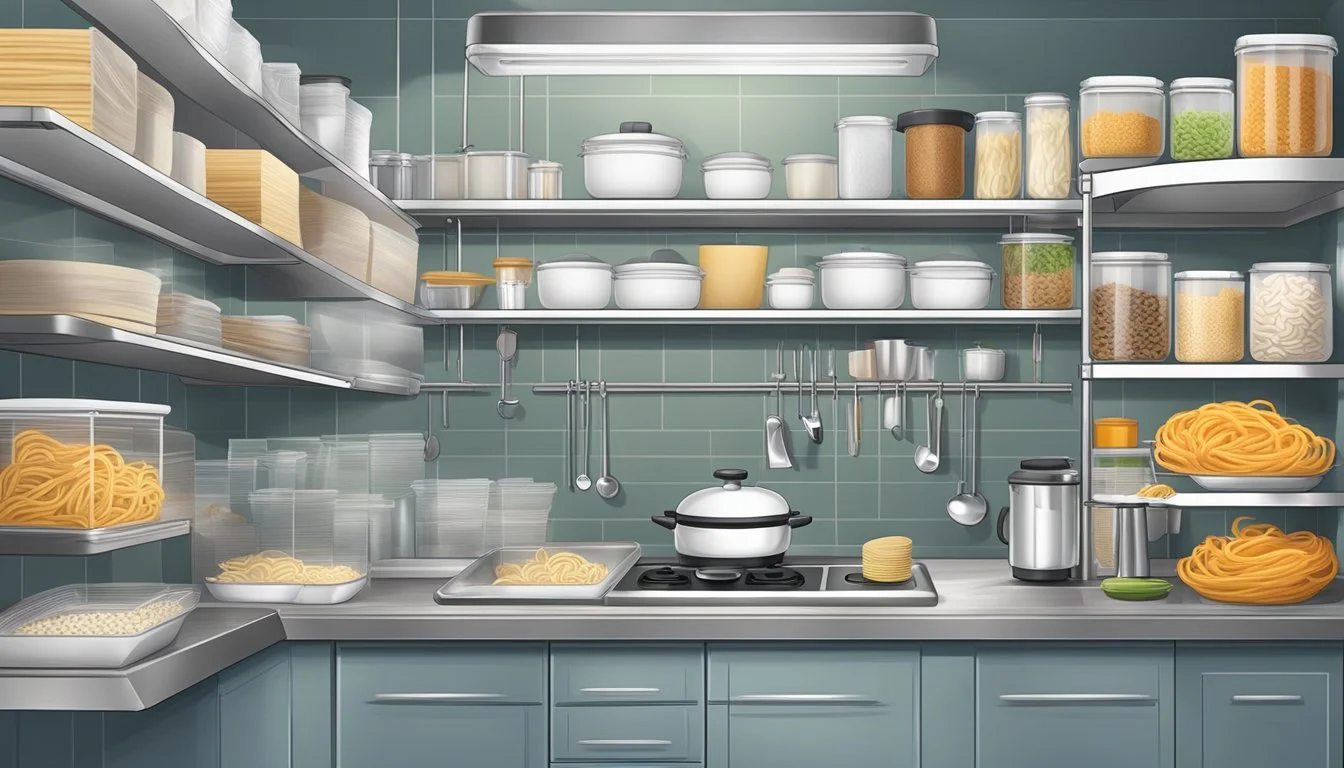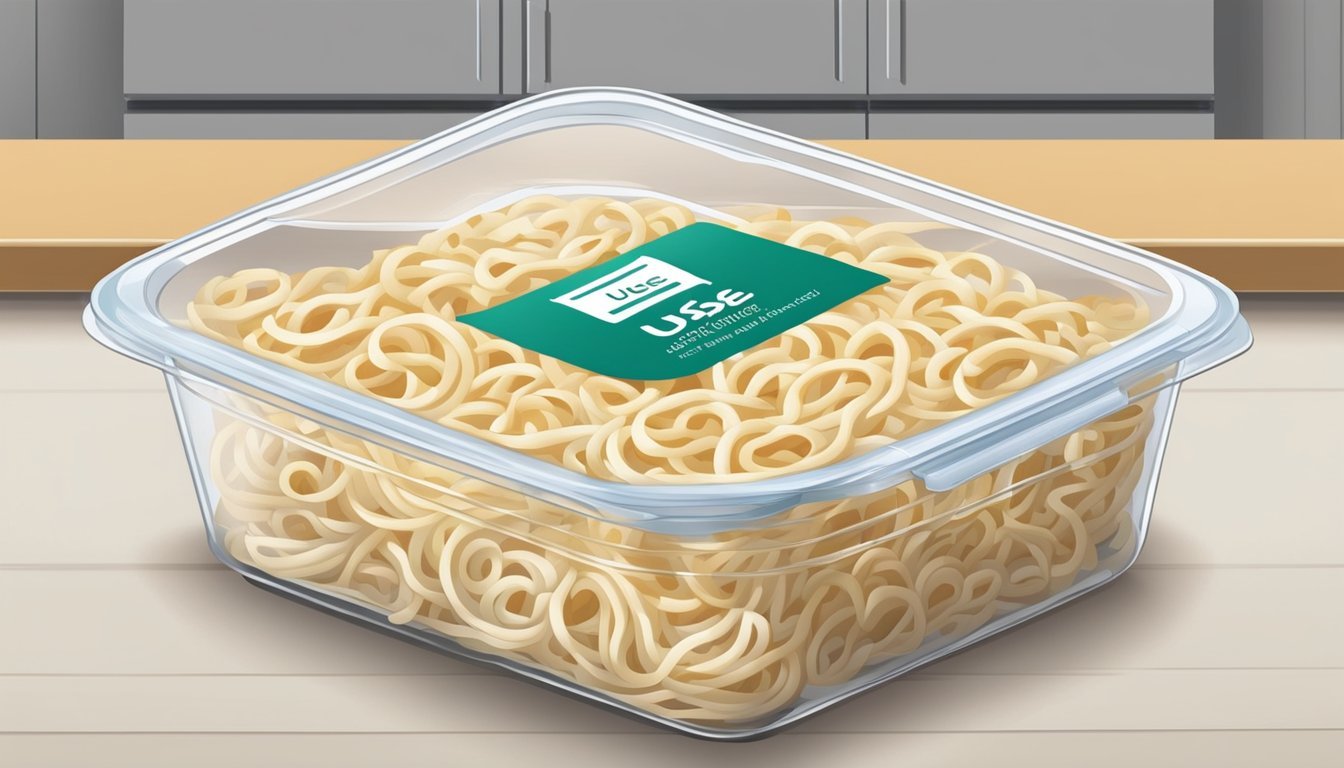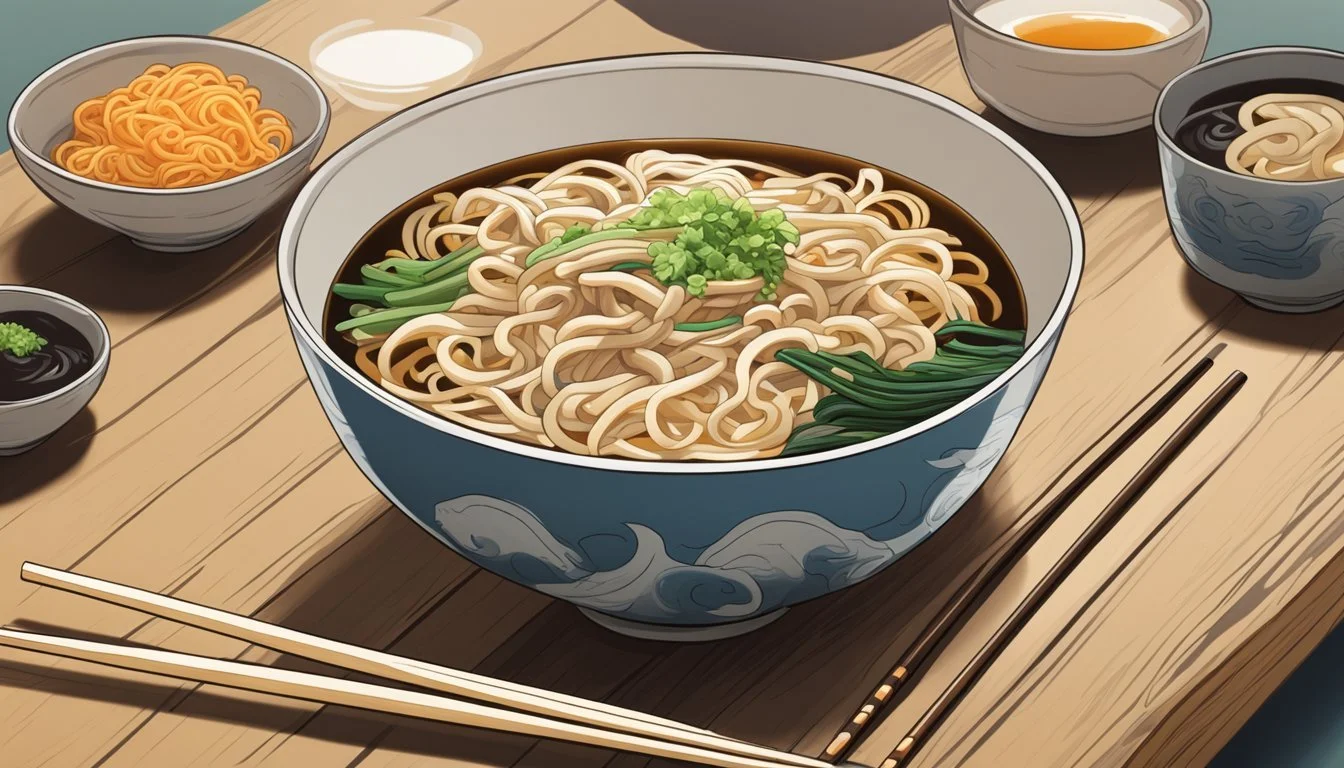Do Udon Noodles Go Bad?
Essential Storage Tips and Shelf Life Facts
Udon noodles, a staple in Japanese cuisine, are made from wheat flour and provide a delightful, chewy texture that's beloved worldwide. Refrigerated udon noodles can last for several days, typically between 3-5 days, before they start to lose their optimal freshness. For longer-term storage, freezing udon noodles can extend their shelf life to up to three months.
Fresh udon noodles are best consumed shortly after purchase, ideally within three days, to ensure they maintain their quality and flavor. Dried udon noodles, on the other hand, offer a more extended shelf life when kept in a cool, dry place, often lasting well beyond the expiration date under proper storage conditions.
Proper storage is key to making the most of udon noodles, whether they are fresh or dried. Keeping them in a cool, dry environment can significantly delay spoilage and ensure you have this delicious ingredient on hand whenever the craving strikes.
Understanding Udon Noodles
Udon noodles are a type of Japanese wheat noodle known for their thick and chewy texture. They are a staple in Japanese cuisine and are commonly used in soups, broths, and stir-fries.
Originating from Japan, udon noodles are typically made from wheat flour, water, and salt. This simplicity makes them distinct from other types of noodles that may use additional ingredients.
Characteristics
Thick and chewy texture
Made from wheat flour, water, and salt
Versatile in various dishes like soups and salads
Storage Tips
Keep udon noodles fresh by following these storage guidelines:
Refrigerator: 3-5 days
Freezer: Up to 3 months
Use airtight containers or heavy-duty freezer bags to prevent freezer burn.
Proper storage is crucial to maintaining their quality and safe consumption. Spoilage can occur if not stored correctly, leading to potential health risks.
Types of Udon Noodles
Udon noodles come in various forms, each with distinct characteristics and uses. Understanding the differences between fresh, dried, and frozen udon noodles can help in selecting the right type for any dish.
Fresh Udon Noodles
Fresh udon noodles are known for their soft, chewy texture and are usually found in refrigerated sections of grocery stores. These noodles are made from wheat flour, water, and salt, and often require minimal cooking time, usually just a few minutes in boiling water.
They are ideal for dishes that need a quick-cooking noodle with a fresh taste. Fresh udon noodles are particularly popular in soups like kake udon, where they can absorb the flavors of the broth. Because they contain a higher moisture content, their shelf life is relatively short, typically lasting 3-5 days in the refrigerator.
Dried Udon Noodles
Dried udon noodles are a convenient option with a much longer shelf life compared to their fresh counterparts. These noodles are dehydrated and can be stored in the pantry for several months. They require a bit longer cooking time, usually around 8-10 minutes in boiling water, to rehydrate properly.
Dried udon noodles are perfect for making stir-fry dishes or any recipe where a firmer texture is preferred. The drying process concentrates the wheat flavor, giving dried udon a slightly different taste and texture than fresh udon. They are a staple in many kitchens due to their versatility and long-lasting nature.
Frozen Udon Noodles
Frozen udon noodles combine the best qualities of fresh and dried udon. These noodles are cooked and then flash-frozen to preserve their texture and flavor. They are incredibly convenient as they can be stored for months in the freezer and usually only need to be thawed and heated briefly before use.
Frozen udon noodles retain the chewy texture of fresh noodles but offer the extended shelf life of dried noodles. They work well in both hot dishes like nabeyaki udon and cold dishes such as zaru udon. Their ability to quickly adapt to any recipe makes them a favorite among busy cooks looking for quality without compromising on convenience.
Shelf Life and Storage
Udon noodles have varying shelf lives depending on how they are stored. Proper storage conditions can significantly extend their usability.
Pantry Storage
Dried udon noodles can be kept in a pantry for extended periods. Storing dried noodles in a cool, dry place, such as a pantry or cupboard, helps maintain their quality. An airtight container is recommended to protect them from moisture and pests. Generally, dried udon noodles can last several months past their expiration date if stored properly. Checking the expiration date on the package ensures they remain fresh and safe to eat.
Refrigeration
Fresh udon noodles have a shorter shelf life and should be refrigerated. Typically, fresh noodles will last for about 3-5 days in the refrigerator. It is crucial to store them in an airtight container to maintain freshness and prevent them from absorbing odors. Cooked udon noodles can also be refrigerated, with a similar storage life of up to five days. Proper refrigeration helps retain their texture and flavor.
Freezing
For long-term storage, udon noodles can be frozen. Both fresh and cooked noodles can be kept in the freezer for up to three months. Place them in airtight containers or freezer bags to prevent freezer burn and preserve their quality. Labeling the containers with the date of freezing can help track their usability period. Defrosting the noodles properly before use will ensure they retain their original texture and taste.
Effective storage methods differ based on whether the noodles are dried, fresh, or cooked. Properly managing these storage conditions can help extend the shelf life of udon noodles, ensuring they remain a convenient and tasty option.
Signs of Spoilage in Udon Noodles
Recognizing the indicators of spoilage in udon noodles is vital for ensuring food safety. Key signals include changes in appearance, smell, and texture.
Visual Inspection
Fresh udon noodles should appear smooth and evenly colored. If mold or dark spots appear, it's a clear sign of spoilage.
For dried udon noodles, look for any discoloration or presence of moisture in the packaging, as these can indicate that the product has deteriorated. Frozen udon should remain free from frost and ice crystals. If these appear, it means the noodles have begun to degrade due to freezer burn.
Regular examination of the noodles can prevent consumption of spoiled goods. Always check the packaging for signs of compromise.
Off Odor and Texture
Fresh udon should have a neutral or slightly sweet fragrance. An ammonia-like or sour smell indicates they have gone bad.
Dried udon noodles should not have any off-putting odors. If an unusual smell is detected, it likely means the noodles are no longer safe to eat. The texture of fresh udon should be chewy but not sticky or slimy.
If there's any stickiness or sliminess, it indicates spoilage. For frozen udon, any rubbery or brittle textures suggest the noodles have degraded. Always trust your senses to judge the quality.
These signs will help determine if udon noodles are still fresh or if they need to be discarded for safety.
Preparing and Cooking Udon Noodles
Udon noodles can be prepared in various ways, each method highlighting different aspects, from boiling in water for traditional dishes to stir-frying and making flavorful soups.
Boiling Udon Noodles
Boiling udon noodles is a fundamental technique. Fill a large pot with sufficient water to fully submerge the noodles. Bring the water to a rolling boil.
Add the udon noodles and stir them gently to prevent sticking. Cook fresh udon noodles for 8-10 minutes, or follow package instructions for dried noodles. Ideally, they should be tender yet firm.
Once cooked, drain the noodles and rinse under cold water to halt the cooking process and remove excess starch. This method prepares the udon for dishes such as salads and soups.
Stir-Frying Udon Noodles
Stir-frying udon noodles offers flexibility. Begin by preparing the ingredients: vegetables like bok choy and mushrooms, and proteins such as tofu or chicken. Pre-cooked udon noodles work best to avoid excess moisture in the stir-fry.
In a hot pan with a bit of oil, start by cooking the proteins until browned. Add vegetables and cook until they soften.
Add the cooked udon noodles to the pan, stirring continuously. Season with soy sauce and other desired condiments. The noodles should absorb the flavors while maintaining their chewiness.
Making Udon Soup
Udon soup combines noodles with a flavorful broth. Start by preparing a dashi-based broth or use ready-made low sodium broth. Avoid boiling the miso paste, adding it off heat to retain its nutrients and flavor.
Cook the udon noodles in boiling water, then transfer them to the broth. Add vegetables like bok choy and protein such as silken tofu or tempura right before serving.
Ensure the broth is well-seasoned but not too salty. This method showcases the umami-rich broth and the chewy texture of the noodles, essential for a traditional Japanese noodle soup experience.
Accompaniments and Variations of Udon
Udon noodles can be enjoyed with a variety of accompaniments that enhance their flavors. They are versatile and can be paired with both traditional Japanese ingredients and international recipes to create satisfying meals.
Traditional Japanese Accompaniments
In Japanese cuisine, udon noodles are often served with a variety of traditional accompaniments. Tempura (battered and fried vegetables or seafood) is a popular choice due to its crispy texture which complements the chewy noodles. Another classic is kake udon which features a flavorful broth made with dashi, soy sauce, and mirin.
Toppings such as scallions and sesame seeds add an aromatic touch, while boiled eggs provide extra protein. Marinated vegetables like cucumbers, radishes, and eggplants can be added for a refreshing contrast. These elements make the dish not just delicious but also visually appealing and balanced in terms of nutrition.
International Udon Recipes
Udon noodles have found a place in international cuisine as well. They can be used in stir-fry dishes with chicken, broccoli, bell peppers, and onions, wherein garlic and soy sauce create a savory base with a hint of sweetness. Sesame oil adds depth to the flavors, making the dish cohesive.
For a unique twist, cold udon noodles can be tossed in peanut or sesame sauce. This version is not only different but also a great way to enjoy noodles during warmer weather. Seafood udon is another variant where ingredients like shrimp or squid are added, offering a healthy and protein-rich option. These international recipes showcase the adaptability of udon noodles and their ability to blend harmoniously with various ingredients.
Health and Safety Considerations
Proper handling and storage of udon noodles are crucial to ensure their nutritional benefits and prevent foodborne illnesses. This section covers nutritional details, potential health risks, and safe consumption practices.
Nutritional Information
Udon noodles are relatively low in calories and fat. One cup of cooked udon noodles contains approximately 200 calories and 40 grams of carbohydrates. Despite being low in protein, they are free of cholesterol and low in sodium.
The low-fat content makes them a healthier choice compared to other more calorie-dense noodle dishes. Incorporating ingredients like vegetables or aburaage (fried tofu) can improve nutritional value.
Foodborne Illness
Udon noodles, like any food product, can be subject to bacterial contamination if not stored correctly. Improper storage may lead to the growth of harmful bacteria, increasing the risk of food poisoning. Symptoms can include stomach cramps, nausea, and diarrhea.
Always use sensory checks - sight, smell, and texture - to determine if the noodles have spoiled. Discoloration, an off smell, or slimy texture indicates that it's unsafe to consume.
Best Practices for Safe Consumption
Proper Storage: Keep dried udon noodles in a cool, dry place. Fresh udon noodles should be stored in the refrigerator and consumed within 3-5 days for maximum quality.
Freezing: For extended shelf life, freeze udon noodles. Use airtight containers or heavy-duty freezer bags to prevent freezer burn. When properly frozen, they can last up to three months.
Handling: Practice good hygiene when preparing noodle dishes. Use clean utensils and surfaces to avoid cross-contamination. Cook to the right temperature to kill any potential bacteria.
Adhering to these practices will help mitigate health risks and ensure a safe and enjoyable noodle experience.
How to Handle Leftovers
Proper handling of leftover udon noodles ensures they remain safe to eat and retain their quality. Key considerations include refrigeration, reheating, and thawing methods.
Refrigeration of Cooked Udon
Store cooked udon noodles in an airtight container to maintain their quality. Containers should be tightly sealed to protect noodles from other refrigerator odors and excess moisture.
Refrigerate the noodles at a temperature of 40°F (4°C) or lower. This helps keep them fresh and reduces the risk of bacterial growth. Cooked udon can be stored in the refrigerator for up to 3 days.
Label the container with the storage date to keep track of freshness.
Reheating Udon Noodles
Reheat udon noodles properly to avoid changes in texture. If using a microwave, place noodles in a microwave-safe bowl and add a splash of water or broth. Cover loosely and microwave on medium heat for 1-2 minutes, checking and stirring occasionally.
For stovetop, place the noodles in a pot or pan with a bit of water or broth and heat over low to medium heat. Stir continuously to ensure even heating. Avoid excessive reheating as it may cause noodles to become mushy.
Thawing Frozen Udon
When thawing frozen udon noodles, it's best to do so in the refrigerator. Place the container or bag of frozen noodles in the refrigerator and allow them to thaw slowly, usually taking several hours or overnight.
For faster thawing, place the frozen noodles in a sealed plastic bag and submerge in cold water. Change the water every 30 minutes until fully thawed. Avoid using hot water or the microwave for thawing as it can affect the texture and safety of the noodles.
Udon Noodles in Culinary Culture
Udon noodles, a staple in Japanese cuisine, have a significant place in both local and global culinary traditions. Their versatile nature and unique texture make them a beloved dish in various forms and recipes.
Udon's Place in Japanese Cuisine
In Japan, udon noodles are celebrated for their thick, chewy texture and ability to absorb flavors from broths and sauces. Commonly served in hot dashi broth, a traditional Japanese soup stock, they are often topped with ingredients like tempura, green onions, and kamaboko (fish cake).
Regional varieties add to the cultural significance. For instance, Sanuki Udon from Kagawa Prefecture is renowned for its firm texture, while Inaniwa Udon from Akita is thinner and smoother. Mizusawa Udon from Gunma and Goto Udon from Nagasaki also exemplify local adaptations, showcasing regional flavors and ingredients. These regional differences highlight the noodle's adaptability and importance in Japanese culinary heritage.
Global Influence and Adaptation
Outside Japan, udon noodles have been embraced and adapted by various culinary traditions. In the United States, they are commonly found in fusion dishes, combining elements of Japanese cuisine with local ingredients.
In countries like South Korea and China, udon has been integrated into local noodle culture, appearing in dishes with regional twists. Restaurants and home cooks alike experiment with these noodles, creating innovative dishes that reflect their unique culinary traditions while maintaining the essence of udon.
In Western cuisines, udon is often featured in stir-fries, soups, and salads, offering a hearty and satisfying noodle option. This global appeal is a testament to the noodles' versatility and enduring popularity.



